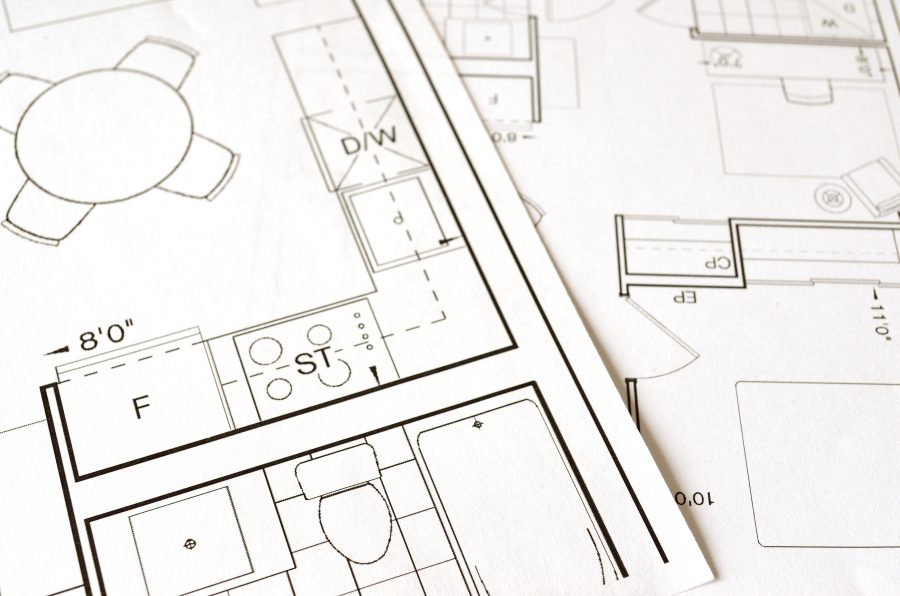High house prices, stamp duty costs, and the overall shortage of property supply determine many homeowners to rather improve their homes than move into a new one. Giving a new lease of life to your interior, remodelling your kitchen, or building an extension can make your home feel new.
Regardless of what renovations you want to make, finding funds for your project is essential. Here are five of the best ways to raise money for your home improvements.
 1. Use Your Cash
1. Use Your Cash
The easiest way to fund your home improvements. Investing your savings or matured saving bonds into your home could be a more sensible solution than investing in a holiday or a new car. Home improvements can raise the value of your property by over 10%, depending on their nature.
According to financial experts, cash is the cleanest way to fund your project, as you’re not beholden to a lender. However, this doesn’t mean you should use all your savings on upgrading your home.
To avoid draining your accounts, build up a savings pot and set a budget for your project. You could either wait for the works until you’ve saved all the money or use your savings first before taking on lower debt.
Advantages of using your cash:
- The freedom of carrying on home improvements at your own pace.
- Instantaneous funding speed. You won’t have to wait for liquidity to be released.
- No interest, fees, or charges. Using your savings is absolutely free.
- No loan to pay back.
Disadvantages of using your cash:
- Funding home renovation projects could deplete all your reserves.
- You might not have enough money to fund larger projects.
2. Use a Credit Card
If you only need a small amount, applying for a credit card could be a great way to fund your renovation project. Most banks give their clients credit cards you will have to pay off at the end of each month. Some financial institutions also propose 0% interest credit cards which you can repay in a set number of months, usually over 12, without being charged any interest.
Since banks still lend you money, you’ll have to have an impeccable credit history and a good credit score to get one.
Regardless of which type of credit card you can claim, pay attention to paying your debt on time, or you might be subject to high-interest fees and late payment charges. Most credit cards also come with an associated annual cost.
Nevertheless, funding your project through a credit card is often cheaper than getting a loan. Furthermore, some cards may even give you rewards, such as money-back perks or airline miles.
Advantages of using a credit card:
- Money is quickly available whenever you need it.
- Possibility to earn lucrative points and rewards.
Disadvantages of using a credit card:
- You could pay high interest and fees if you don’t pay back on time.
- You could spend more than you can afford.
3. Get an Unsecured Loan
Unsecured loans are preferred by most homeowners looking for a way to fund their projects. These loans are not connected to a piece of collateral, meaning the lenders won’t be able to touch your assets if you default on the loan.
Most personal loans and home improvement loans are unsecured, but banks or building societies will unlikely grant you one unless you have an excellent credit report and a steady income.
While you won’t put your assets at risk, know that unsecured loans also come with higher interest rates than secured loans. Unsecured loans also have lower borrowing limits than their secured counterpart; you can usually borrow up to £50,000 depending on your circumstances.
Advantages of getting an unsecured loan:
- You can get cash quite fast, as most unsecured loans have a quick completion.
- You won’t put your home or assets at risk.
- Most people can access unsecured loans.
Disadvantages of getting an unsecured loan:
- High-interest rates.
- Unsecured loans tend to lack flexibility. Most of the time, you will not be able to renegotiate your instalments nor pay in advance without facing a fine.
4. Get a Secured Loan
It is easy to understand secured loans are connected to collateral, usually your car or home. While they are more flexible and come with lower interest rates, they put your assets at risk. If you can’t repay your debt, the bank may become the legal owner of the collateral.
However, secured loans are easier to access by homeowners who don’t have an immaculate credit history.
If you need a higher sum to finish your project, a secured loan can give you access to up to £100,000. In most cases, you’ll also be able to renegotiate your instalments or pay off the debt in advance without facing a fine.
Advantages of getting a secured loan
- Secured loans can give you more money at a lower interest rate.
- Repayment periods are usually longer.
- Repaying a secured loan on time can enhance your credit rating.
Disadvantages of getting a secured loan
- Getting the loan could be lengthy, as lenders may have to evaluate your collaterals.
- You can lose your possessions if you fail to pay your debt.
5. Remortgaging for Home Improvements
Remortgaging for home improvements could be a great solution for homeowners who need to borrow a large amount. For instance, if you’re planning a complete renovation of all your living areas or if you want to build an extension to your house.
If you have enough equity in your home, a remortgage could give you plenty of cash to invest in your project.
However, getting a new mortgage can be tricky. Making early repayments towards your current lender may be expensive, depending on how much you have already paid. Lenders may also be reluctant in accepting your application.
If your application gets accepted though, you may secure yourself a better deal and sufficient funds for your home improvements.
Advantages of getting a remortgage:
- You can use your home’s equity to get more cash.
- There is a chance to secure a better interest rate.
- The possibility of consolidating debts into a single monthly payment.
Disadvantages to getting a remortgage:
- You will stretch your mortgage to a longer timeframe.
- Remortgaging could be lengthy.
- You may have to face some fees to get a remortgage.
- Your home can be repossessed if you don’t pay on time.
In Conclusion
There are several ways to raise money for home improvements, but all come with pros and cons. As long as you analyse your circumstances carefully and avoid getting into debt you can’t afford, there is undoubtedly a way to carry out the renovation works you’ve been dreaming about.
Get work started on your home, we can help you find the right Home Improvement Loan.
DISCLAIMER: These articles are for information only and should not be construed as advice. You should always seek advice prior to taking any action.

 1. Use Your Cash
1. Use Your Cash